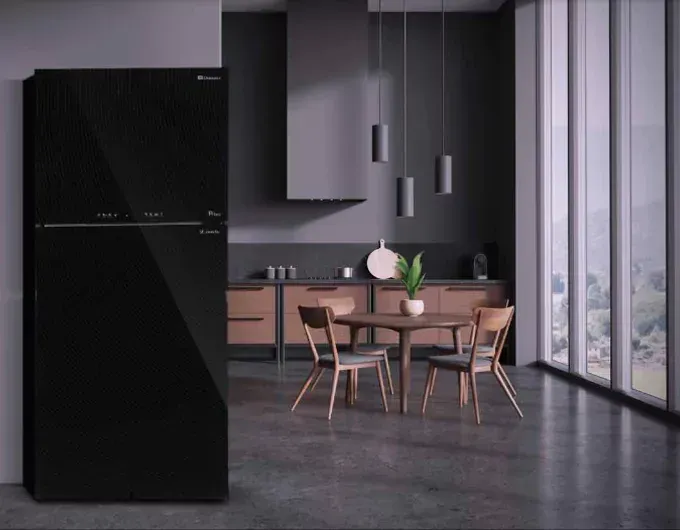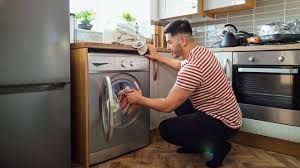Most Asked Questions About Water Filter Repair in Refrigerators
Q1: How often should I replace the water filter in my refrigerator?
A: Generally, it is recommended to replace the water filter in your refrigerator every six months. However, this timeline can vary depending on the model and usage. If your household uses a significant amount of filtered water, you may need to replace it more frequently. Some refrigerators have indicator lights that signal when it's time to change the filter. Additionally, if you notice a decrease in water flow, a change in water taste, or an odor, it might be time to replace the filter even if it hasn't been six months.
Q2: Why is my refrigerator water filter leaking?
A: A leaking refrigerator water filter can be caused by several issues, including incorrect installation, a damaged or cracked filter, or an improper seal. Ensure that the filter is properly installed by following the manufacturer’s instructions. Check for any visible cracks or damage on the filter itself. Additionally, inspect the O-rings and gaskets to make sure they are in good condition and correctly positioned. If the leak persists after checking these components, it may be necessary to replace the filter or consult a professional for further diagnosis.
Q3: Can I use my refrigerator without a water filter?
A: Yes, you can use your refrigerator without a water filter, but you may need to install a bypass plug to ensure proper water flow. Most refrigerators are designed to function with or without a water filter. Without a filter, you will not have the benefit of filtered water, which means that any impurities or contaminants present in your tap water will not be removed. If you choose to operate your refrigerator without a filter, it is advisable to use a separate water filtration system for drinking water.
Q4: How do I know if my refrigerator water filter needs replacing?
A: Indicators that your refrigerator water filter needs replacing include a noticeable reduction in water flow, changes in water taste or odor, and the appearance of particles in the water or ice. Many modern refrigerators come equipped with a filter replacement indicator light that will notify you when it's time to change the filter. Additionally, if it has been six months or more since you last replaced the filter, it is likely time for a new one, regardless of whether you experience any of the above issues.
Q5: What are the steps to replace a refrigerator water filter?
A: Replacing a refrigerator water filter typically involves the following steps:
- Locate the filter compartment, which is usually inside the refrigerator or at the base grille.
- Turn off the water supply to the refrigerator.
- Remove the old filter by turning it counterclockwise or pressing the release button, depending on the model.
- Insert the new filter by aligning it with the compartment and turning it clockwise until it locks in place or pushing it in until it clicks.
- Turn the water supply back on and run a few gallons of water through the dispenser to flush out any air and impurities.
- Reset the filter indicator light, if applicable, by following the manufacturer’s instructions.
Q6: Why does my refrigerator's water filter light stay on after replacing the filter?
A: If the water filter light stays on after replacing the filter, it might not have been reset properly. Each refrigerator model has a specific method for resetting the filter indicator light. Common methods include pressing and holding the "Reset" or "Filter" button for a few seconds, or following a sequence of buttons on the control panel. Refer to your refrigerator’s user manual for the exact instructions. If the light remains on after following the reset procedure, there may be an issue with the indicator system, and consulting a professional technician might be necessary.
Q7: Can I clean and reuse my refrigerator water filter?
A: Most refrigerator water filters are designed for single use and should not be cleaned and reused. The filtration material inside the filter is typically not suitable for cleaning, and attempting to do so can compromise its effectiveness, leading to potential water contamination. For optimal performance and safety, it is best to replace the filter with a new one as recommended by the manufacturer. Some models offer reusable filters, but these are rare and come with specific cleaning instructions that must be followed to ensure proper function.
Q8: What types of contaminants do refrigerator water filters remove?
A: Refrigerator water filters typically remove a variety of contaminants, including chlorine, lead, mercury, cysts, and volatile organic compounds (VOCs). They are also effective at reducing unpleasant tastes and odors from the water. Some advanced filters can remove pharmaceuticals and pesticides. The specific contaminants removed depend on the filter type and model. Always check the filter's certification and specifications to understand which contaminants it effectively removes and ensure it meets your water quality needs.
Q9: Why is my refrigerator water filter not dispensing water?
A: If your refrigerator water filter is not dispensing water, it could be due to a clogged filter, a kinked water line, or a problem with the water inlet valve. Start by checking if the filter is properly installed and not clogged. If it has been more than six months since the last filter change, replace it with a new one. Inspect the water line for any kinks or obstructions. Additionally, ensure that the water supply to the refrigerator is turned on. If these steps do not resolve the issue, the water inlet valve might be faulty and may require professional repair or replacement.
Q10: How do I dispose of old refrigerator water filters?
A: Refrigerator water filters should be disposed of according to your local waste management regulations. Some filters can be recycled, while others need to be thrown away. Check if the filter manufacturer offers a recycling program. Many brands have partnerships with recycling centers to handle used filters. If recycling is not an option, place the used filter in a plastic bag and dispose of it with your regular household waste. Always follow any specific disposal instructions provided by the manufacturer to ensure safe and environmentally friendly disposal.




